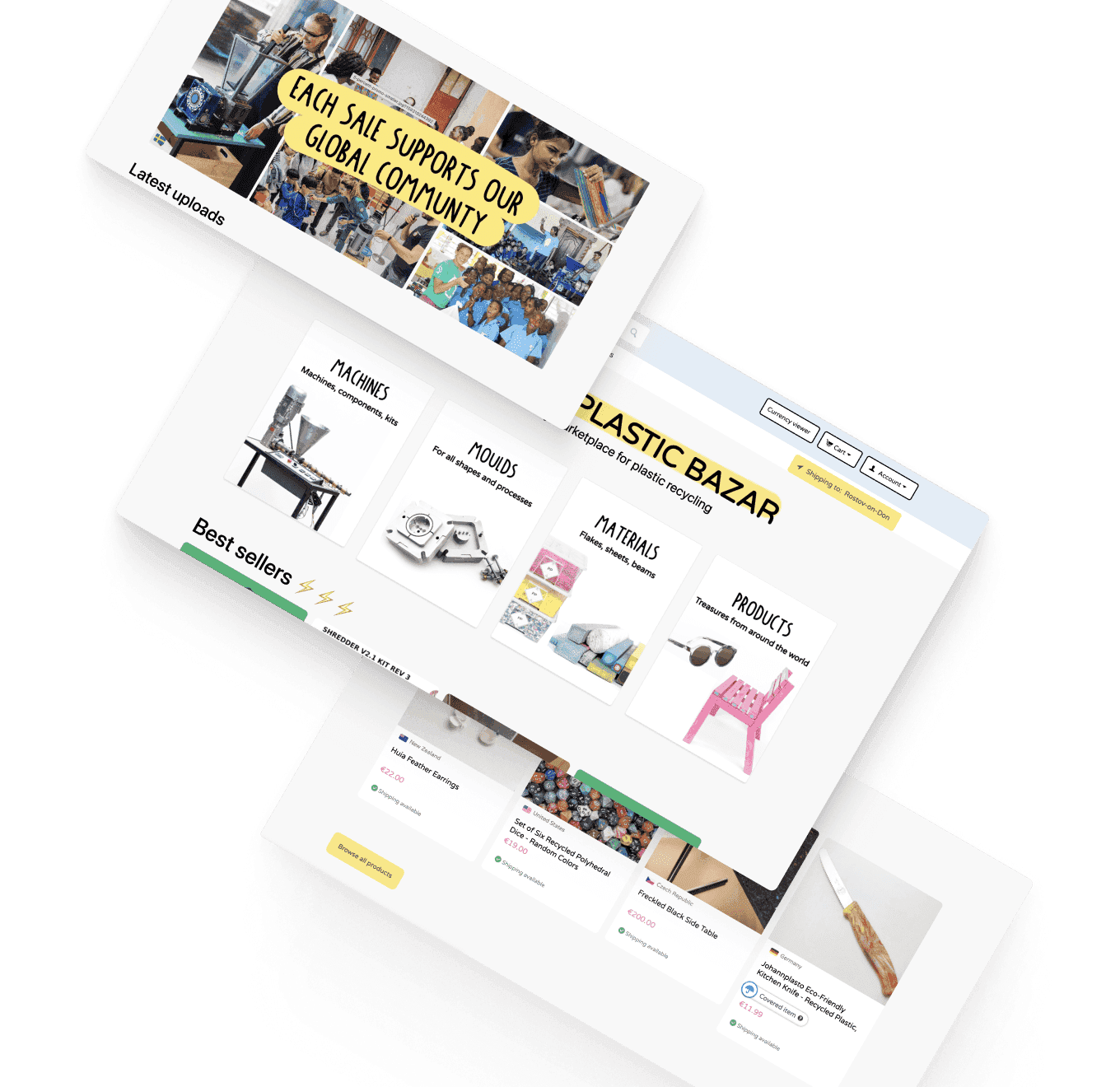
Precious Plastic Bazar: Recycled Creations & DIY Tools
Customization of a recycling-focused marketplace
Customer
Precious Plastic, founded by designer Dave Hakkens in 2013, is a global community and open-source platform helping people recycle plastic into furniture, tools, and art. In 2016, they launched their marketplace to empower individuals to establish micro-recycling businesses.
Challenge
Simplify vendor onboarding for mostly non-professional users
Customize shipping rates for global sellers
Ensure payment setup clarity
Enhance communication among DIY creators
Solution
To support Precious Plastic's grassroots community, we tailored the CS-Cart platform to be intuitive for new sellers and fit for eco-focused commerce.
Key customizations included:
Etsy-style vendor panel.
One-page product creation for hassle-free listings
Simple shipping logic.
Flat domestic/international pricing based on country groups
Stripe integration.
Stripe Connect made a mandatory step before listing products
Real-time messaging.
Vendors can now share mockups via image and PDF attachments
Transparent listings.
Vendor name and country are always visible on category and search result pages

Results
A vendor-friendly P2P marketplace with simplified onboarding
Reduced support requests due to intuitive workflows
Empowered 40,000+ recyclers worldwide to turn plastic waste into products
Website Type:
Task:
Enable eco-conscious P2P commerce for recycled plastic products
Business area:
Country:
Netherlands
Duration:
Ongoing
Team:
1 Project Manager 1 Systems Analyst 3 Developers 1 QA 1 SysOps Admin